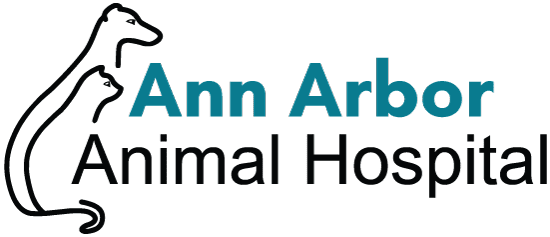
by Janet Figarra, DVM
You may be anxious about your pet’s surgical procedure for many reasons. Take a few minutes to read about our protocols and hopefully ease your mind on surgery day.
Anesthesia prep
- Within a month of surgery, often on the day of, we’ll run lab work to evaluate organ chemistries and CBC. This helps us form an anesthetic plan by identifying underlying problems that may complicate response to certain drugs.
- Starting 1-3 days before a procedure, we request that you give an oral antacid – this reduces problems with reflux which can ulcerate the esophagus when your pet is under general anesthesia.
- The night before surgery, we ask that you give an oral antiemetic, Cerenia, which suppresses the nausea that otherwise often occurs in response to opioids and other medications. We can give Cerenia as an injection the morning of surgery but the shot stings a bit and is more costly than the pill.
- DO NOT FEED your pet the morning of surgery. We ask that you cut off access to food before midnight the day before surgery. It is fine to leave water down and if you need to use a small treat to give morning medications, that is okay; just be sure to mention this to the technician when you drop off your pet.
- We typically schedule surgical admissions for 8 to 8:30 am. Expect at least 30 minutes for admission as we’ll need time to review the treatment plan and any special concerns.
- For most procedures, we will feed a small meal after your pet is awake; you may bring a bit of food for this if your pet is on a special diet. We have a lot of blankets and towels so no need to bring bedding.
- Once your pet is awake, we will call to discuss findings and set up a discharge time.
Risks of anesthesia
Although young animals at a healthy weight with no underlying disease are the least likely to develop complications, no anesthetic procedure is without risk. Reported risk of death in dogs and cats is 0.17% and 0.24% respectively; risk is lower in healthy pets, at 0.05% and 0.11% respectively.
The most common problems arise from intraoperative hypotension, cardiac arrhythmias, regurgitation and hypothermia. We do our best to prevent and address these difficulties head on.
- Pre-anesthetic antacid and antiemetic (mentioned earlier) reduces incidence and complications of regurgitation.
- All animals under general anesthesia are intubated and maintained on IV fluids.
- A technician will monitor blood pressure, ECG, oxygen saturation, end tidal CO2 and temperature during anesthesia and correct as indicated by adjusting gas saturation, fluid rate, respiratory rate, etc.
- We use ‘HotDog‘ and ‘Bair Hugger‘ warming systems during anesthesia and recover pets in heated cages.
- A designated technician or veterinary assistant will sit with your pet and continue to monitor vital signs until he is extubated and breathing well on his own.
Anesthetic drugs and pain control
 We use a multi-modal approach to anesthesia and pain management. We will tailor anesthesia protocol to your pet’s needs but, generally, we give a preanesthetic pain medication and sedative such as Morphine and Acepromazine, or Hydromorphone and Midazolam. After sedation, we place an IV catheter and give an induction agent such as Alfaxan, Propofol or Ketamine/Diazepam, then intubate and maintain anesthesia with isoflurane gas. Perioperatively, we often give a non-steroidal anti-inflammatory such as Carprofen or Onsior and we typically send pets home with further pain medication as dictated by their needs.
We use a multi-modal approach to anesthesia and pain management. We will tailor anesthesia protocol to your pet’s needs but, generally, we give a preanesthetic pain medication and sedative such as Morphine and Acepromazine, or Hydromorphone and Midazolam. After sedation, we place an IV catheter and give an induction agent such as Alfaxan, Propofol or Ketamine/Diazepam, then intubate and maintain anesthesia with isoflurane gas. Perioperatively, we often give a non-steroidal anti-inflammatory such as Carprofen or Onsior and we typically send pets home with further pain medication as dictated by their needs.
The Days After Surgery: What to expect when recovering
After minor procedures, you may have difficulty keeping your pet quiet. Sedatives may be recommended short term for young or very busy pets. For more invasive or painful procedures, your pet may need more TLC during recovery. Check incisions daily and clean gently as needed with warm water and a soft cloth. Some surgeries include drains which can be messy for a few days and require extra cleaning. You may need to prevent your pet from licking or scratching at sutures using E-collar (Elizabethan collar, also known as the “cone of shame”), bandages or a t-shirt. We will discuss more specific incision care at discharge as needed.
We want your pet’s anesthesia and surgery to go well and we want you to understand all that is expected. Please don’t hesitate to ask if you have more questions or specific concerns for your pet.
Recent Posts
About Us
Ann Arbor Animal Hospital is a locally-owned animal hospital operating for over 90 years in Ann Arbor, MI.
